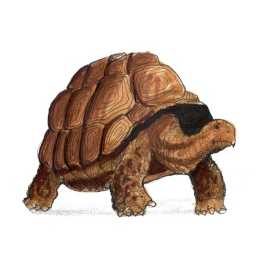What Factors Lead to Infections?
Turtles, tortoises, and terrapins are extremely susceptible to lung infections, especially (but not limited to) when they are living in wet climates.
There are many different causes for lung infections in chelonians, (turtles, tortoises, and terrapins) usually due to improper care, or hazardous conditions.
When contracting diseases out in the wild, it is likely that nature is just taking its course, or the chelonian came into contact with another sick animal.
What Does My Chelonian’s Enclosure Need In Order to Avoid Infections?
The biggest mistake reptile keepers make that causes lung infections for their chelonians, is not keeping the enclosures clean! Bacteria builds up, causing an infection that may be undetectable for weeks before symptoms start to physically show. This bacteria can come from moldy dirt, algae infested waters, as well as airborne pathogens being spread from sick chelonians kept in creeps.
TortoiseLand HQ
If you have a species of turtle that is kept in water, make sure they have an option to come completely out of the water. You can start by giving them a deck or driftwood underneath their UV lamps (or the sun) to relax on.
Water in the lungs is also one of the biggest reasons why reptiles get sick! It is important to have a space for them to be completely out of the water so that they can rest, and dry out as well.
Pearl uses an Osborne Industries Heat Mat to keep her warm and dry as she fights off her infection. Visit tortoiseland.org to receive a coupon for 10% off a heat mat!
In order to avoid lung infections due to improper enclosure care, make sure your chelonians are bathed throughout the week, and given the proper UV rays (UVA, UVB and UVU). It is also important to keep their spaces sanitary, so that bacteria does not get a chance to infect your tortoise companion.
Pearl our female Desert Tortoise, soaking up the UVs and 85°F temperatures, on top of an Osborne Industries Heat Mat
What Are The Symptoms of a Lung Infection?
Click the link above to meet Pearl, our Desert Tortoise, who is currently being treated for a respiratory infection!
Larger tortoises with lung infections are the most vocal with their symptoms. However, any chelonian can show you physical symptoms.
They will typically have discharge leaking from the eyes and nose. This is mucus that normally is never present, and is a sign of declining health- usually a bacterial, or viral respiratory infection.
Newvee, one of our male desert tortoises who came to TortoiseLand suffering from a respiratory infection and being provided at home care, per a reptile veterinarian’s instructions.
Your tortoise or turtle may cough or wheeze, and breathe with their beaks open. This is not normal, and is a sign of improper breathing. A healthy chelonian will only breathe through their nostrils, the two (or three depending on the chelonian) holes on their upper beak.
Pearl, our recent female desert tortoise rescue who is suffering from a respiratory infection.
What Kind Of Care Do You Provide To Sick Chelonians?
If your infected chelonians are kept in a creep (a herd or group of tortoises), you should quickly take actions to get them seen by a specialized vet, and quarantine them. It is important to do this as soon as you know which ones are sick, to avoid getting the rest of the creep infected.
TortoiseLands quarantine pens
Pearl the Desert Tortoise who receives at home care, from the advice of a reptile veterinarian
To quarantine ill reptiles, it is best to follow a specialized vet’s instructions on how to quarantine them at home, or in a work space. You can start off by separating them from the rest of the creep.
Every animal has different strengths in terms of immune systems. You never know if an infected tortoise is more or less sick than another one, without going to a specialized vet. Take care of your Chelonian friends, and provide them with the best care in your capabilities.
Written by Jahleena Nin-Marroquin Board of Director’s Blog Author.
Please visit TortoiseLand.org and select the donate page, or go to Tortoiseland’s Paypal to help us continue providing care for these special animals.
